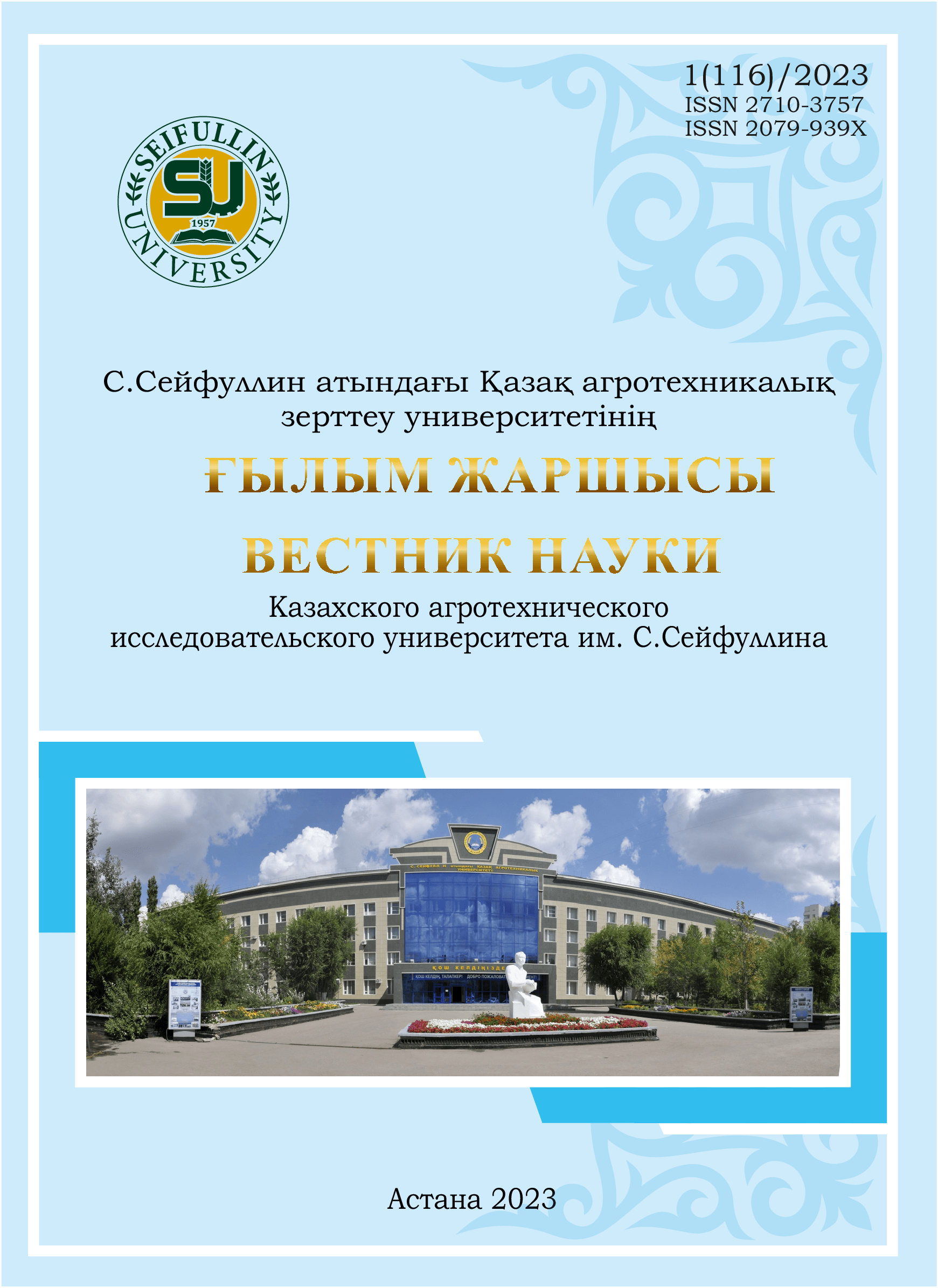PRODUCTIVITY AND PROFITABILITY OF OILSEED FLAX DEPENDING ON WEATHER CONDITIONS AND CULTIVATION TECHNOLOGY IN ARID AGRICULTURE
DOI:
https://doi.org/10.51452/kazatu.2023.1(116).1341Keywords:
oilseed flax; direct seeding; minimum tillage system; traditional tillage system; yield of flax oilseeds; profitability of flax cultivation.Abstract
The article examines the influence of various tillage systems on the water-physical properties of the soil, soil fertility, crop infestation, fullness of seedlings, the number of flax plants before harvesting and their impact on increasing the sustainability of flax production in arid conditions. The research results illustrate the effectiveness of various tillage systems in the efficient use of soil and water resources. The research shows the role of minimizing tillage systems to control the risk of production, profitability of flax crop production. The study evaluates the characteristics of soil quality, productivity and efficiency of the use of various tillage systems and mineral fertilizers. The values of the volume density of the soil were 0,98 g/cm3 for the traditional tillage system and 1.16 for the minimum tillage system in the 0-30 cm soil layer. Potentially mineralized N in the 0-15 cm soil layer contained 30 and 22 kg/ha of ammonium nitrogen with minimal and direct sowing, respectively. This indicates a positive relationship between tillage systems and potentially mineralized nitrogen, reflecting differences in land management. A positive nitrogen balance was obtained when 30 kg/ha of nitrogen was applied each year, and no accumulation of nitrate nitrogen was observed even at rates exceeding nitrogen removal in grain. This confirms the opinion that direct seeding in combination with cultivation of crops in a soil - cover crop rotation is a way to preserve soil resources. The yield of flax seeds is 14% and 16% higher with a resource-saving tillage system compared to the traditional system.

